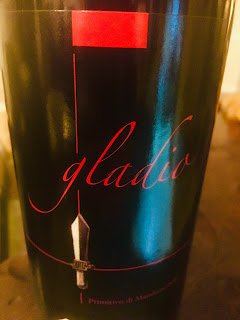A Wine Competition For All Professionals
**Winner Will Receive a Trip to Verona and Tuition to Attend the Second Annual
Valpolicella Program in late January**
”It is our pleasure to welcome sommeliers, wine professionals and members of the media to the inaugural Valpolicella Education Program (VEP) competition in the United States this year,” says Director Olga Bussinello. “ It is our hope that whomever graduates from the VEP will be involved in the professional events of the Corsortium and will be an advocate for Valpolicellla wines within the market,”
The Consorzio Tutela dei Vini Valpolicella, celebrating 50 years of protecting and promoting the wine of the Valpolicella region in Italy, invites members of the wine trade and media to participate in an exclusive competition, with the winner receiving a full scholarship to attend the Valpolicella Education Program in Verona.
All who wish to participate must first take a qualifying online quiz, which tests familiarity with Valpolicella DOC wines: Valpolicella DOC, Valpolicella Rioasso DOC, Amarone della Valpolicella DOCG and Recioto della Valpolicella DOCG.
All entrants who pass the online qualifier will then be invited to the Eventi Hotel in New York City, on Tuesday, November 13th, for a short in-person exam.
The VEP committee will select one winner from the group.
To participate, take the online questionnaire at: http://www.surveymonkey.com/r/8SYKY5L before Friday, November 9th. If you make it to the second round, the short in-person exam will take place at the Eventi Hotel (849 6th Avenue, 2nd floor, at 10am on Tuesday, November 13th.
The competition and event are open to trade professionals and members of the media only. For more information, please contact the event organizer, Amber Gallaty, at amber@thegallavantgroup.com or visit http://www,consorziovalpolicella.it/en/
Philip S. Kampe
”It is our pleasure to welcome sommeliers, wine professionals and members of the media to the inaugural Valpolicella Education Program (VEP) competition in the United States this year,” says Director Olga Bussinello. “ It is our hope that whomever graduates from the VEP will be involved in the professional events of the Corsortium and will be an advocate for Valpolicellla wines within the market,”
The Consorzio Tutela dei Vini Valpolicella, celebrating 50 years of protecting and promoting the wine of the Valpolicella region in Italy, invites members of the wine trade and media to participate in an exclusive competition, with the winner receiving a full scholarship to attend the Valpolicella Education Program in Verona.
All who wish to participate must first take a qualifying online quiz, which tests familiarity with Valpolicella DOC wines: Valpolicella DOC, Valpolicella Rioasso DOC, Amarone della Valpolicella DOCG and Recioto della Valpolicella DOCG.
All entrants who pass the online qualifier will then be invited to the Eventi Hotel in New York City, on Tuesday, November 13th, for a short in-person exam.
The VEP committee will select one winner from the group.
To participate, take the online questionnaire at: http://www.surveymonkey.com/r/8SYKY5L before Friday, November 9th. If you make it to the second round, the short in-person exam will take place at the Eventi Hotel (849 6th Avenue, 2nd floor, at 10am on Tuesday, November 13th.
The competition and event are open to trade professionals and members of the media only. For more information, please contact the event organizer, Amber Gallaty, at amber@thegallavantgroup.com or visit http://www,consorziovalpolicella.it/en/
Philip S. Kampe
Director, Olga Bussinello






















